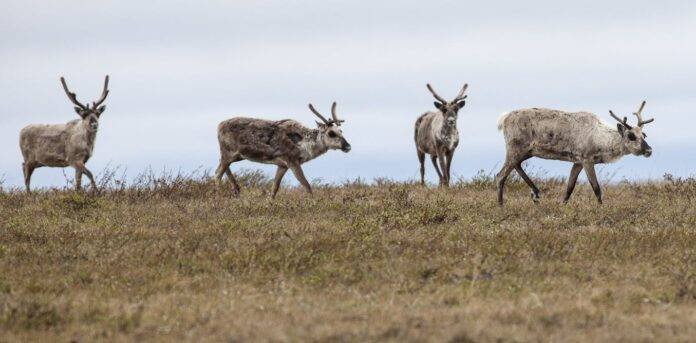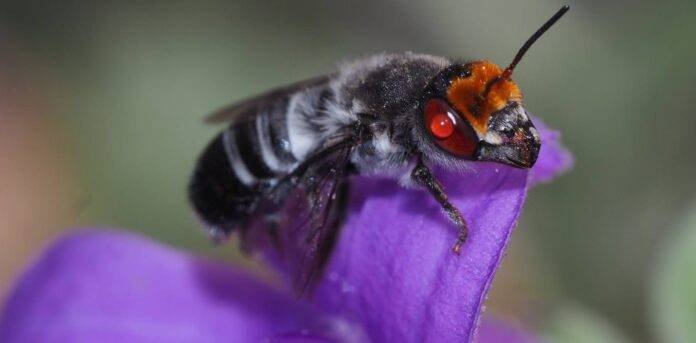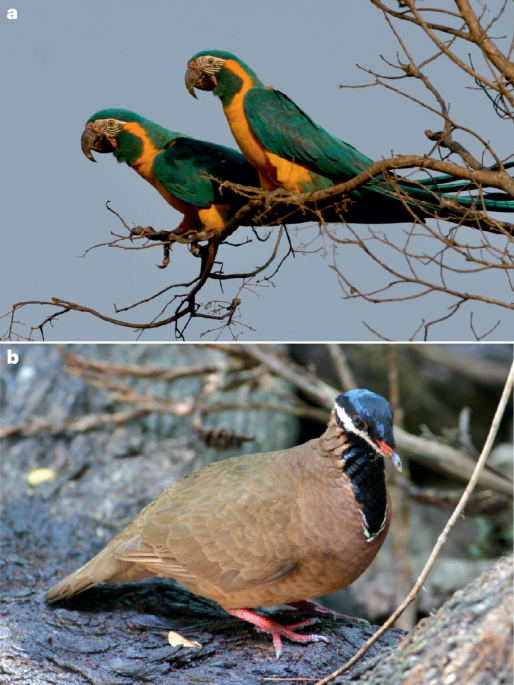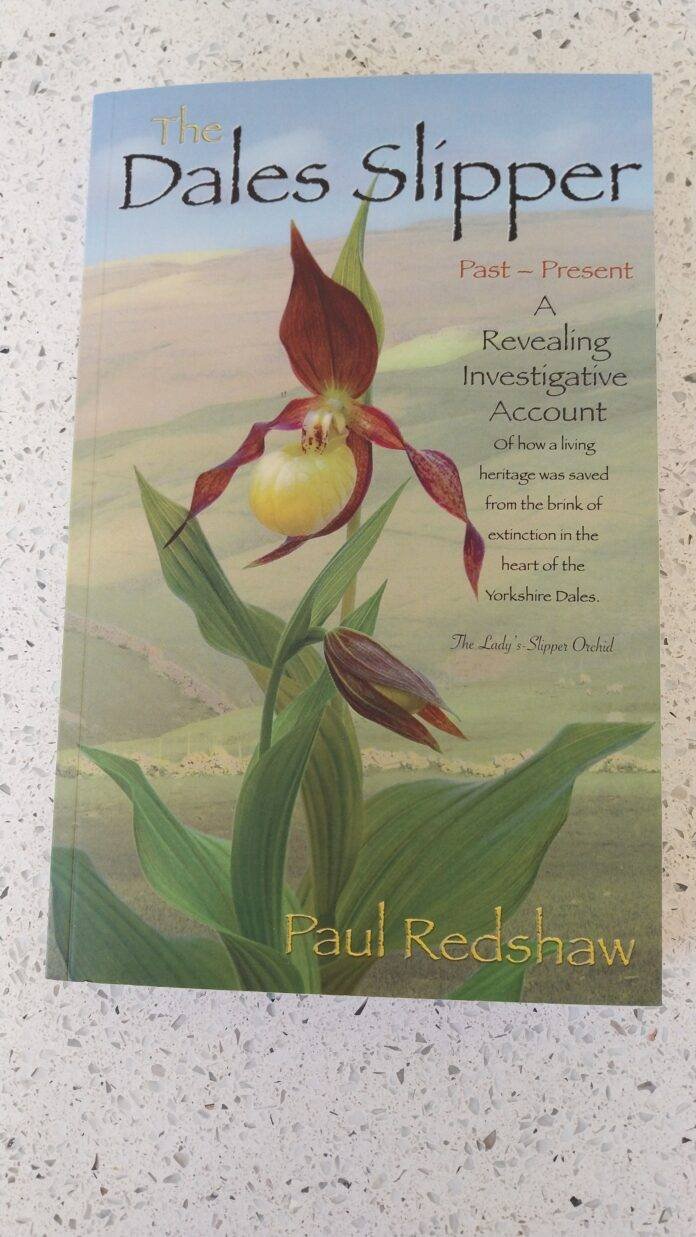Globally, bumble bees are threatened by a range of environmental stressors including habitat degradation, climate change, pesticides, invasion of nonnative species, and pathogen transmission1,2,3. Surveys from Europe, North America, and South America indicate a temporal shift in the relative abundance and spacial shift in the distribution of Bombus species2,4. Biological invasions of managed Apidae acquired for agricultural pollination, such as bumblebees, was named in the top 15 emerging issues for global conservation and biological diversity in 20175. In Patagonia, spanning southern regions of Chile and Argentina, the large garden bumblebee (Bombus ruderatus) and the buff-tailed bumblebee (Bombus terrestris) have extended their range into the habitat of the native Patagonian bumblebee (Bombus dahlbomii) since their initial introduction through agriculture and the international bee trade, leaving B. dahlbomii classified as endangered by the IUCN6. Populations of B. dahlbomii have faced a historical decline that is projected to continue in areas beyond where alien bumblebees have been introduced7,8. The commercial rearing of B. terrestris imported to Chile for pollination has led to an invasion which results in the foraging superposition between native and exotic bumblebees and pathogen spillover from these bees to wild populations of B. dahlbomii, posing significant conservation risks to this emblematic species9,10,11.
Puerto Blest, Argentina, is home to B. dahlbomii, recognized as one of the largest bumblebee species, and colloquially known as the “moscardón” in Chile and “mangangá” in Argentina. These bees are highly ecologically significant, playing a crucial role in the pollination of a diverse range of flowering plants, including economically important crops and endangered species12,13,14. Patagonia’s native plants are impacted by B. dahlbomii’s decreased visitation, apparent in reduced metrics of reproduction like fruit set15. Endemic bumblebees are more efficient pollinators to many native plant species than invaders, with larger body sizes, increased frequency and duration of visits to flowers, and a higher quantity and quality of pollen16,17,18. Their decline raises concerns not only for the conservation of this iconic species but also for the stability of Patagonia’s interconnected ecosystems and the services they provide19.
On a smaller scale, invasive B. terrestris are not only directly competing with endemic B. dahlbomii, but also altering the landscape in which they forage. B. terrestris have constructed an ecological niche in their new ecosystem by changing their feeding behaviors to bite holes at the base of Fuchsia magellanica flowers rather than typical front visits. This behavior favors the survival of invasive bee species, as nectar robbing (via biting holes) increases foraging returns, depletes resources for other species, and provides continued access to nectar until the flower wilts20. Nectar robbing by invasive bees can damage flowers and disrupt plant-pollinator mutualisms by bypassing a flower’s reproductive structures, raising concern for plant reproduction and population viability15,21. B.dahlbomii are responding to B. terrestris’ ecological niche construction by secondary nectar robbing, buffering B. terrestris’ competitive advantage, which could promote species coexistence. Still, this niche and potential distribution overlap leads species distribution models to forecast an ongoing population decrease of B. dahlbomii in the near future8. These complex and evolving ecological interactions necessitate ongoing monitoring in the field to better track Bombus spp. populations and biodiversity metrics.
Long-term and large-scale population assessments are essential for understanding shifts in Bombus species community compositions and their ecological consequences22. Conventional techniques for monitoring Bombus species, such as netting and trapping, can interfere with natural behaviors and frequently result in the death of the bees being studied. Conversely, non-lethal transect walks, the most common monitoring method, are laborious and involve trained individuals identifying bees along set paths, a practice limited by visibility and the observer’s ability to discern species, especially in dense vegetation or low light conditions23,24. Some bee species are indiscernible by sight in the field, so they are grouped together while monitoring via transect walks23. Netting and trapping, while effective for detailed species composition and abundance data, require significant effort and expertise25. Pan traps, which use colored bowls filled with soapy water to passively collect bees, offer a low-effort method but result in bee mortality, which is undesirable for conservation-focused studies26. Additionally, pan traps provide an accumulation of insects over a given period but do not offer regular and systematic sampling of the chosen site. While species distribution models provide valuable insights for population scale estimations, they are not sufficient for concrete and comprehensive bee monitoring. Given these limitations, passive acoustic monitoring (PAM), ecological monitoring through automated sound recording, presents a potential alternative, when coupled with machine learning, to obtain accurate and applicable data on bee populations and their interactions27,28,29. PAM allows for non-invasive, continuous data collection on bee diversity and buzz abundance across various environments with limited species diversity, enhancing the scope and energetic payoff of ecological studies and conservation efforts30.
The provided acoustic data and local temperature, humidity, and gases (i.e., volatile organic compounds) can support ecophysiology and behavioral research on how different bee species may display different thermal or temporal activity peaks or behaviorally adapt to abiotic conditions, which in turn affects functional diversity and species richness. In Puerto Blest, we observed less bumblebee activity on colder, wetter days, suggesting that temperature and humidity influence bee behavior in the area. Elevated temperatures can reduce the number of bumblebee foraging trips and time spent foraging, which is increasingly relevant with ongoing global warming31,32. Environmental humidity interacts with bumblebee ability to detect floral humidity, as floral humidity signals can masked by environmental humidity at higher ranges, as well as whether bumblebees collect pollen or nectar.33,34. Air pressure also impacts bee activity levels and foraging efficiency35. Volatile organic compounds are produced by flowering plants to attract pollinators, while carbon dioxide (CO2) and ozone (O3) alter these volatile organic compound profiles, impacting pollinator interactions36. Additionally, environmental data is valuable for building multimodal machine learning models for buzz classification, trained by both acoustic and environmental data in tandem.
Bioacoustic data and machine learning have already been used as a non-invasive and efficient way to identify bumblebees and track their behavior37,38,39. Unique acoustic signatures from flight buzzing sounds can be leveraged to monitor bees with machine learning algorithms. Gradišek et al. have identified queens and worker bees from different bee species, as well as behaviors of the worker Bombus hypnorum using random forest algorithms trained on bioacoustic data38.
Similar species detection technology includes BirdNET and ANIMAL-SPOT, machine learning models for the detection and classification of animal species. BirdNET is targeted specifically towards avian sounds collected through citizen science that claims to be able to identify over 6,000 bird species40,41. Using crowdsourced data, BirdNet is repeatedly improved, and could be retrained with new data to be applied to different taxa. ANIMAL-SPOT, a machine learning framework for biologists to adapt, targets more generalized acoustic identification to be extended to many kinds of vocalizing animals. This technology aims to provide the basis to detect and identify animals based on taxonomic group, species, or call type42. With these models adapted and applied to this dataset as a mode of species detection, we can employ machine learning to closely monitor Bombus spp. while minimizing the effort required to monitor them. By training machine learning models on acoustic and environmental data from Puerto Blest, we can develop robust tools for non-invasive ecological monitoring. This approach promotes continuous and scalable monitoring capabilities, crucial for conservation efforts and understanding complex ecological dynamics.
In this paper, we present a unique dataset of the soundscape in Puerto Blest using custom-made, low noise, stereo acoustic recorders, with specific emphasis on bumblebee bioacoustics. This dataset includes audio, temperature, humidity, and gas concentration data, collected simultaneously. The audio data includes continuous audio from 12 locations over 6 days within the same area, as well as annotated audio segments marked Native/Invasive with respect to identified bees. We also present the use of semi-automatic methods as a new technique to annotate and standardize PAM data collection. This data is applicable for developing methods for insect detection and classification in addition to its use for bumblebee monitoring in Patagonia. We discuss the usefulness of this dataset for scientific research, namely monitoring large temporal series of a low abundant species, as well as to document the bioacoustics of an endangered species in high resolution.






